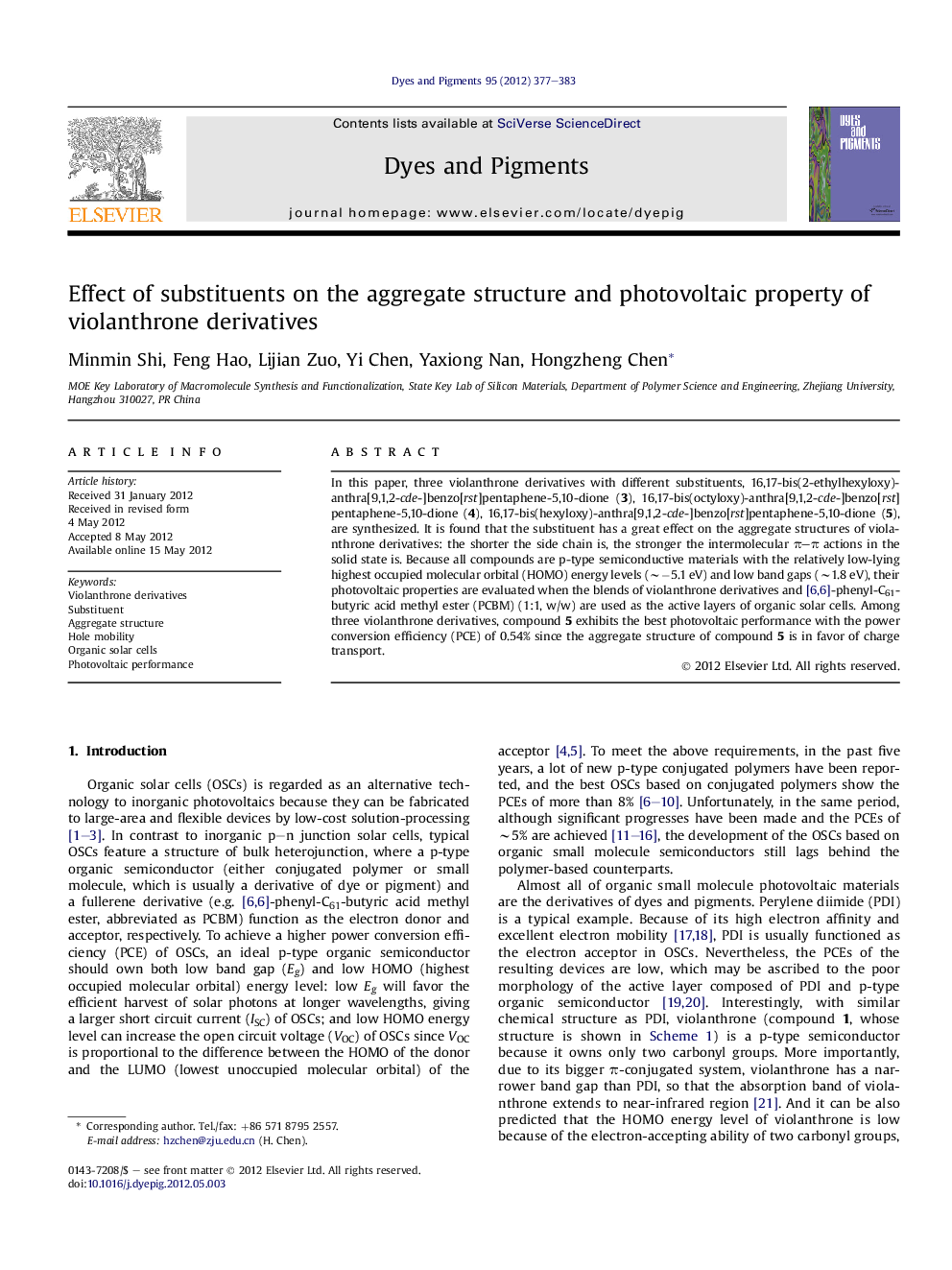| Article ID | Journal | Published Year | Pages | File Type |
|---|---|---|---|---|
| 176813 | Dyes and Pigments | 2012 | 7 Pages |
In this paper, three violanthrone derivatives with different substituents, 16,17-bis(2-ethylhexyloxy)-anthra[9,1,2-cde-]benzo[rst]pentaphene-5,10-dione (3), 16,17-bis(octyloxy)-anthra[9,1,2-cde-]benzo[rst]pentaphene-5,10-dione (4), 16,17-bis(hexyloxy)-anthra[9,1,2-cde-]benzo[rst]pentaphene-5,10-dione (5), are synthesized. It is found that the substituent has a great effect on the aggregate structures of violanthrone derivatives: the shorter the side chain is, the stronger the intermolecular π–π actions in the solid state is. Because all compounds are p-type semiconductive materials with the relatively low-lying highest occupied molecular orbital (HOMO) energy levels (∼−5.1 eV) and low band gaps (∼1.8 eV), their photovoltaic properties are evaluated when the blends of violanthrone derivatives and [6] and [6]-phenyl-C61-butyric acid methyl ester (PCBM) (1:1, w/w) are used as the active layers of organic solar cells. Among three violanthrone derivatives, compound 5 exhibits the best photovoltaic performance with the power conversion efficiency (PCE) of 0.54% since the aggregate structure of compound 5 is in favor of charge transport.
► Three soluble violanthrone derivatives with different alkyloxy substituents are synthesized. ► All violanthrone derivatives are potential electron donors in organic solar cells. ► The violanthrone derivative with the shortest linear substituent shows the highest hole mobility. ► The violanthrone derivative with the shortest linear substituent also exhibits the best photovoltaic performance.
